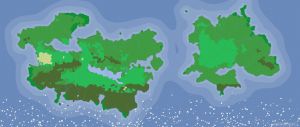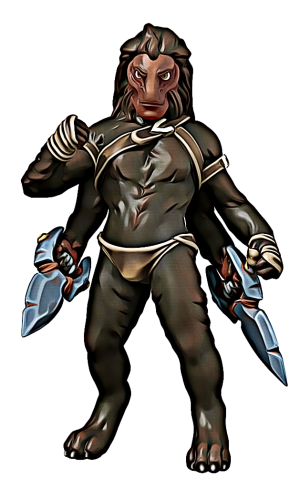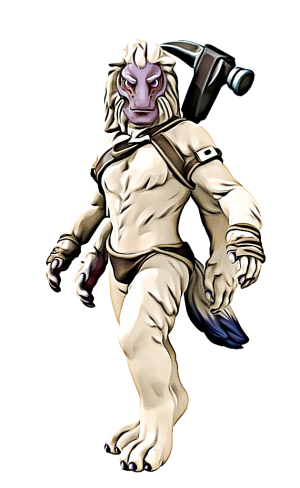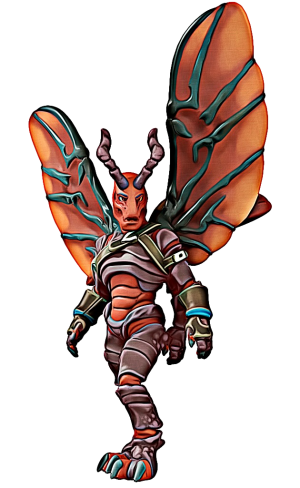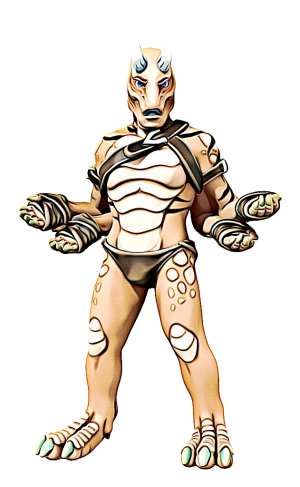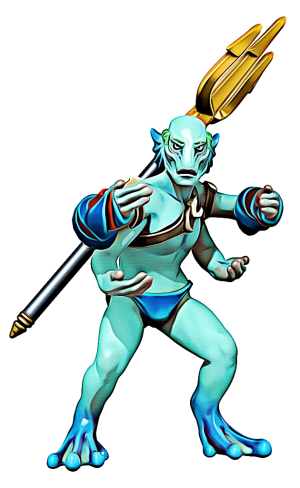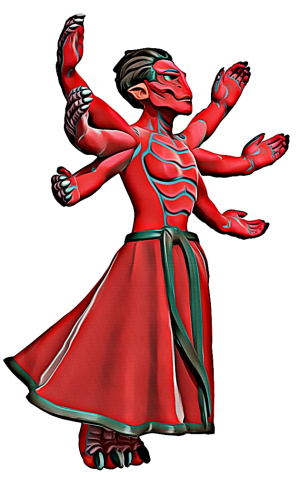Difference between revisions of "Sewoch"
| Line 32: | Line 32: | ||
<br style="clear: both;"> | <br style="clear: both;"> | ||
===[[Washa Washa]]=== | ===[[Washa Washa]]=== | ||
| − | [[File:WashaWasha. | + | [[File:WashaWasha.png|thumb|300px|A Washa Washa]] |
[[Washa Washa]] love the ground. | [[Washa Washa]] love the ground. | ||
| Line 40: | Line 40: | ||
<br style="clear: both;"> | <br style="clear: both;"> | ||
| + | |||
===[[Yeberedo]]=== | ===[[Yeberedo]]=== | ||
[[File:Yeberedo.png|thumb|300px|A Yeberedo]] | [[File:Yeberedo.png|thumb|300px|A Yeberedo]] | ||
Revision as of 22:52, 4 September 2021
| Plane | Physical Plane |
|---|---|
| Genre | Medieval Fantasy |
| Inhabitants | not humas |
| Universe | Lands of Otan Fantasy Novel Series, Dungeons & Dragons 5e Campaign |
Sewoch is something different. Incredibly different from Otan.
Sentient Life on Sewoch
Nebelibali
Nebelibali are creatures of ash and fire who thrive in the heat of volcanoes and flowing lava. Though not exactly a racial variant, the Abati variant of the Nebelibali have skin hardened to near invincibility. The Abati cut a frightening countenance to any who oppose them in a conflict. The Yemifela variant of the Nebelibali share physical similarities with the Yewiha, however they differ greatly in lifestyle, preferring the extreme temperatures of underwater volcanic plumes.
Nebelibali Territory
Nebelibali Factions
Medawochi
Medawochi love life on the plains.
Medawochi Territory
Medawochi Factions
Washa Washa
Washa Washa love the ground.
Washa Washa Territory
Washa Washa Factions
Yeberedo
Yeberedo love the cold.
Yeberedo Territory
Yeberedo Factions
Yenadi
Yenadi love the forest.
Yenadi Territory
Yenadi Factions
Yesemayi
Yesemayi love the air.
Yesemayi Territory
Yesemayi Factions
Yeshiwa
Yeshiwa love the desert.
Yeshiwa Territory
Yeshiwa Factions
Yewiha
Yewiha are creatures of water. While the species can thrive in any water, the Yebahiri variant is most comfortable in saltwater, while the Yewenizi prefer fresh water lakes and rivers. All variants are capable of surviving on land for several days, provided they are supplied with a considerable amount of water.
Yewiha Territory
Yewiha Factions
Multiracial Diaspora
Multiracial Countries
Multiracial Factions
The Religions of Sewoch
To refer to Sewoch religions as religions is perhaps a stretch of the word 'religion'. Ascetics and those considered more 'holy' among the Sewoch practice one of two major branches of a philosophy of improvement. The goal of both philosophies is to achieve Temokiro or the feeling of ultimate experience.
To the outside observer, this goal is achieved or at the very least approached, when the philosophy is applied to improve the quality of life. This is rarely a single issue, however, as the improvement must either benefit an individual on many fronts or provide a benefit to many individuals on a single front. To achieve Temokiro, one must weave a collection of smaller goals into a single greater goal.
The two major branches or 'paths' of this philosophy can be loosely defined as religions. They are called Medigemi, the path of repetion and Kilesa, the path of revision. These two paths are practiced among all sentient species of the Sewoch continent, though some species are known to generally prefer one path to the other.
Deities in Sewochi Religions
While deities do exist for the Sewoch, they are not at all similar to Otani deities. In Otan deities live on another plane of existence, creating, destroying and interceding in the lives of mortals on their own whims. In Sewoch, the deities are ever present and always ready to converse with the faithful.
Sewochi deities are never intercessors. They do engage in whimsical activity, much as do the deities of Otan, however, they never interfere in the affairs of mortals. They set examples, and give detailed instructions to mortals on how to achieve a state of Temokiro. They are said to be an a continuous state of Temokiro themselves, even when engaged in whimsical affairs.
The other major difference with Sewochi deities is that they are shared across the two leading Sewochi religions. Practitioners of both Medigemi and Kilesa may call on the same deity for different reasons, but both acknowledge the same group of deities.
Medigemi
Medigemi is the path of repetition. This one where an act is repeated indefinitely and constantly improved upon in each repetition until it can no longer be improved upon or the level of improvement is negligible. Medigemi requires near infinite patience, however it brings about very powerful techniques for resolving life's issues.
Kilesa
Kilesa is the path of revision. It is a technique for resolving an issue with shortest and most direct path. For example, if an ascetic were to have the problem of reading in low light, a practitioner of Medigemi might learn to recognize symbols and shapes on the page in low light through countless repetitions. The practitioner of Kilesa would light a candle.
Adventurers on Sewoch
Non-Sentient Life on Sewoch
A Brief History of Sewoch
The Sewoch Calendar
| Copyright © 2021-2024 by Robyn Blaber and Will to Power Games. All rights reserved. Content on this website may not be reproduced without written permission of the copyright owner. |
